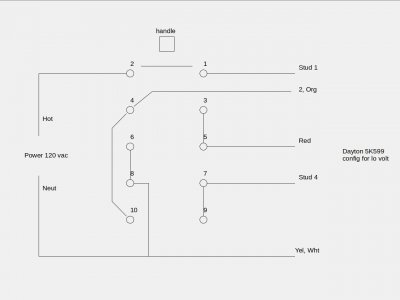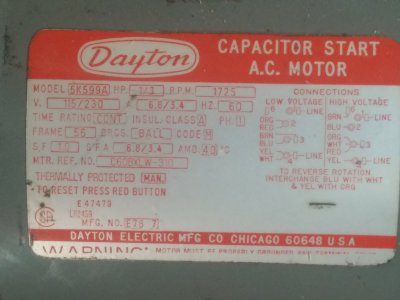- Joined
- Dec 3, 2023
- Messages
- 81
I don't want to have the hot left unswitched or switched with a separate switch... BUT that just means the rotary switch needs another pair of poles to handle the hot switching. It seems at first glance that a switch of that Brand with more poles IS an option, so I think you have found the answer to my crazy wiring by finding the brand of switch I need to buy,... Thanks for your help.
* BTW, I searched for replacement motors earlier today and almost every reversible motor that I saw had only 2 legs that needed to switch to change spin direction. The more I looked, the more I wondered what the difference is in the windings that makes my motor's directional switch so much more complex.
I just need to do a pin map on a piece of paper and verify that I'm getting all the legs taken care of and I'm almost finished with the changes.
* I made my Draw bar style chuck retainer for reverse rotation for around $30. I have to take a few pictures and post them and the parts list on my other thread.
* BTW, I searched for replacement motors earlier today and almost every reversible motor that I saw had only 2 legs that needed to switch to change spin direction. The more I looked, the more I wondered what the difference is in the windings that makes my motor's directional switch so much more complex.
I just need to do a pin map on a piece of paper and verify that I'm getting all the legs taken care of and I'm almost finished with the changes.
* I made my Draw bar style chuck retainer for reverse rotation for around $30. I have to take a few pictures and post them and the parts list on my other thread.



